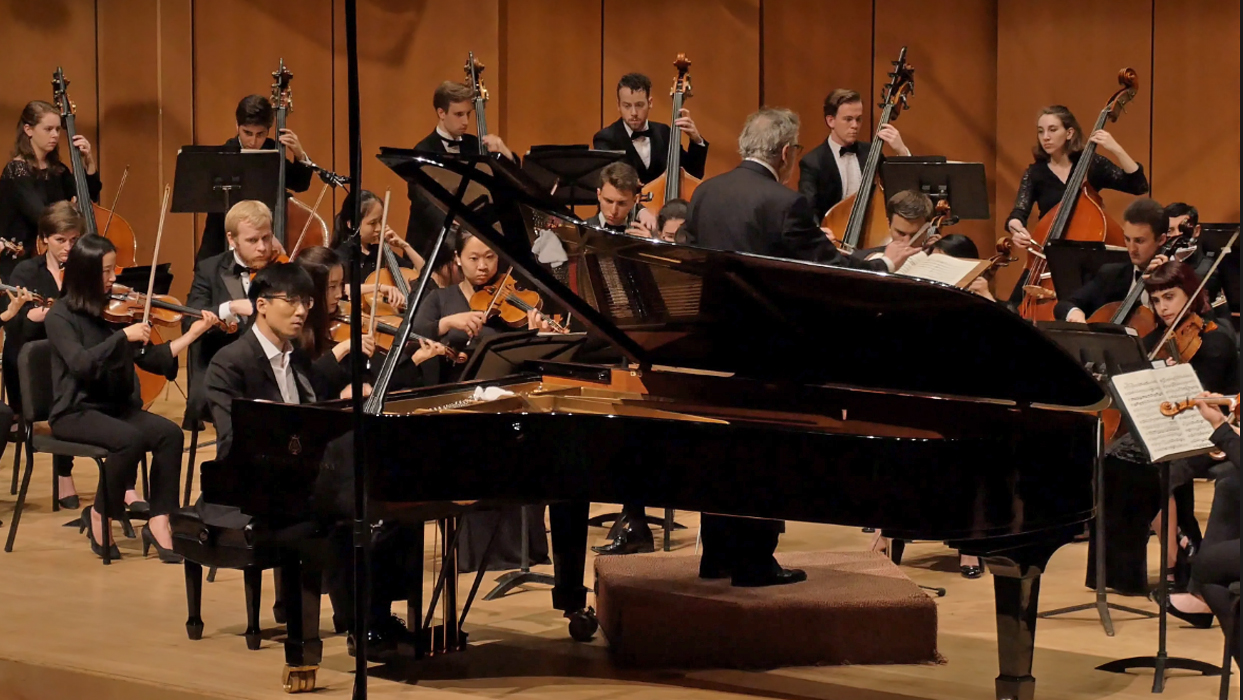Brahms - Piano Concerto No. 1 in D Minor
May 2, 2018
Victor Yampolsky conducts the Northwestern University Symphony Orchestra in Johannes Brahms’s Piano Concerto No. 1 in D Minor, featuring Evan Wong ’20 DMA.
I. Maestoso
II. Adagio
III. Rondo: Allegro non troppo
Program Notes
In addition to the turmoil of the young Brahms’s relationship with the Schumanns, the 1850s were also a time of significant musical inspiration for him. He heard Beethoven’s Ninth Symphony for the first time in 1854, and was profoundly moved. He quickly began sketching what he first believed would be symphony, and later a sonata for two pianos. (Brahms had the opportunity to test out the material with Clara Schumann, with whom he was spending a great deal of time.) Eventually, however, the material began to point Brahms towards the piano concerto form, in a creative process which Brahms described as out of his conscious control.
The first movement, Maestoso, has a grand orchestral introduction, dazzlingly dark and burnished in character. The piano’s entrance, at first spare and restrained, eventually ascends to join the intensity and fervor of the orchestra. Brahms also creates intimate moments of chamber music throughout the first movement, weaving subtle woodwind timbres into the piano’s softest dynamics, and eventually arriving at the pastoral and yearning second theme. Music of tremendous power and virtuosity follows, culminating in a triumphant Beethovenian climax.
The second movement, Adagio, begins with a tender and aching chorale which is eventually taken up by the soloist. The movement plumbs the depths of Brahms’s expressive range: it is a long, slow dance of startling emotional pathos. Orchestra members are often given extended melodies as the pianist accompanies them. The reverie is broken as a burst of martial virtuosity from the soloist signals the beginning of the Rondo. While this movement is the lightest of the three—offering bits of scherzando levity, and inspired in part by Brahms’s admiration of Beethoven’s piano concerto finales—it still retains the gravitas and weight for which Brahms is well-known.
